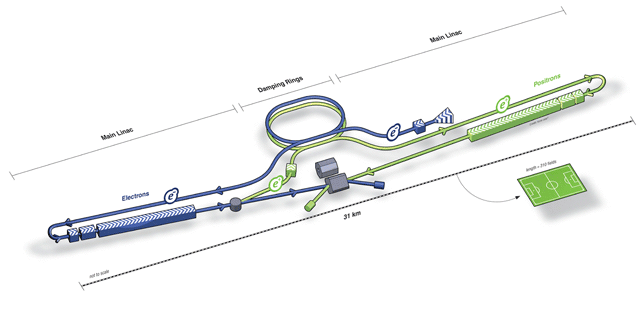Published specifications for International Linear Collider

On the official website of the International Electron-Positron Linear Collider published a technical project (Technical Design Report) for the construction of this facility. Now, after the publication of the document, you can immediately start building as soon as the place for it is chosen.
The document says that the length of the International Linear Collider will be 31 kilometers. In the initial configuration, the accelerator can accelerate particles to a collision energy of 500 GeV, but after a slight upgrade, if necessary, the energy can be doubled to 1 TeV. This energy is less than in the LHC, but not only the collision energy, but also the purity of the experiment is important for studying the Higgs boson. The fact is that the BAC collides protons, while the linear collider will push electrons with positrons. In this case, events are much easier to register with the detectors and for further analysis.
The LHC itself was “sharpened” for the discovery of the Higgs boson, but not for studying it, and the International Linear Collider, in fact, will work specifically in the Higgs boson factory mode and will allow a detailed study of the “particles of God”, the existence of which was recently confirmed by the LHC .
')
The Higgs boson is the cornerstone of the Standard Model, since the Higgs field in the Standard Model is precisely the phenomenon by which electroweak symmetry is broken, and most particles have mass . Naturally, the study of the characteristics of the Higgs boson is extremely important for explaining the phenomena that we observe in the framework of the Standard Model and, perhaps, we can even expand this model by understanding some patterns. Now there are many theories that extend the Standard Model, and to confirm / refute these theories, it is critical to study the properties of the Higgs boson and the Higgs field.
With a total length of the International Linear Collider of 31 km, its key elements are two linear accelerators of 12 km each, the beams of which are directed towards each other.

The construction of the International Linear Collider will begin, presumably, in 2015, and should be completed before 2026. The most preferred accommodation option today are mountainous areas of Japan. The cost of construction will be from $ 10 billion to $ 25 billion.
Source: https://habr.com/ru/post/185532/
All Articles